Classification of Intestinal Gland Cell-Graphs Using Graph Neural Networks
Linda Studer,
Jannis Wallau,
Heather Dawson,
Inti Zlobec,
Andreas Fischer

Auto-TLDR; Graph Neural Networks for Classification of Dysplastic Gland Glands using Graph Neural Networks
Similar papers
Self-Supervised Learning with Graph Neural Networks for Region of Interest Retrieval in Histopathology
Yigit Ozen, Selim Aksoy, Kemal Kosemehmetoglu, Sevgen Onder, Aysegul Uner

Auto-TLDR; Self-supervised Contrastive Learning for Deep Representation Learning of Histopathology Images
Abstract Slides Poster Similar
Revisiting Graph Neural Networks: Graph Filtering Perspective
Hoang Nguyen-Thai, Takanori Maehara, Tsuyoshi Murata

Auto-TLDR; Two-Layers Graph Convolutional Network with Graph Filters Neural Network
Abstract Slides Poster Similar
What Nodes Vote To? Graph Classification without Readout Phase
Yuxing Tian, Zheng Liu, Weiding Liu, Zeyu Zhang, Yanwen Qu

Auto-TLDR; node voting based graph classification with convolutional operator
Abstract Slides Poster Similar
Edge-Aware Graph Attention Network for Ratio of Edge-User Estimation in Mobile Networks
Jiehui Deng, Sheng Wan, Xiang Wang, Enmei Tu, Xiaolin Huang, Jie Yang, Chen Gong

Auto-TLDR; EAGAT: Edge-Aware Graph Attention Network for Automatic REU Estimation in Mobile Networks
Abstract Slides Poster Similar
Region and Relations Based Multi Attention Network for Graph Classification
Manasvi Aggarwal, M. Narasimha Murty

Auto-TLDR; R2POOL: A Graph Pooling Layer for Non-euclidean Structures
Abstract Slides Poster Similar
TreeRNN: Topology-Preserving Deep Graph Embedding and Learning
Yecheng Lyu, Ming Li, Xinming Huang, Ulkuhan Guler, Patrick Schaumont, Ziming Zhang

Auto-TLDR; TreeRNN: Recurrent Neural Network for General Graph Classification
Abstract Slides Poster Similar
On the Global Self-attention Mechanism for Graph Convolutional Networks

Auto-TLDR; Global Self-Attention Mechanism for Graph Convolutional Networks
AOAM: Automatic Optimization of Adjacency Matrix for Graph Convolutional Network
Yuhang Zhang, Hongshuai Ren, Jiexia Ye, Xitong Gao, Yang Wang, Kejiang Ye, Cheng-Zhong Xu

Auto-TLDR; Adjacency Matrix for Graph Convolutional Network in Non-Euclidean Space
Abstract Slides Poster Similar
Equation Attention Relationship Network (EARN) : A Geometric Deep Metric Framework for Learning Similar Math Expression Embedding
Saleem Ahmed, Kenny Davila, Srirangaraj Setlur, Venu Govindaraju

Auto-TLDR; Representational Learning for Similarity Based Retrieval of Mathematical Expressions
Abstract Slides Poster Similar
A General Model for Learning Node and Graph Representations Jointly

Auto-TLDR; Joint Community Detection/Dynamic Routing for Graph Classification
Abstract Slides Poster Similar
Trainable Spectrally Initializable Matrix Transformations in Convolutional Neural Networks
Michele Alberti, Angela Botros, Schuetz Narayan, Rolf Ingold, Marcus Liwicki, Mathias Seuret

Auto-TLDR; Trainable and Spectrally Initializable Matrix Transformations for Neural Networks
Abstract Slides Poster Similar
Privacy Attributes-Aware Message Passing Neural Network for Visual Privacy Attributes Classification
Hanbin Hong, Wentao Bao, Yuan Hong, Yu Kong
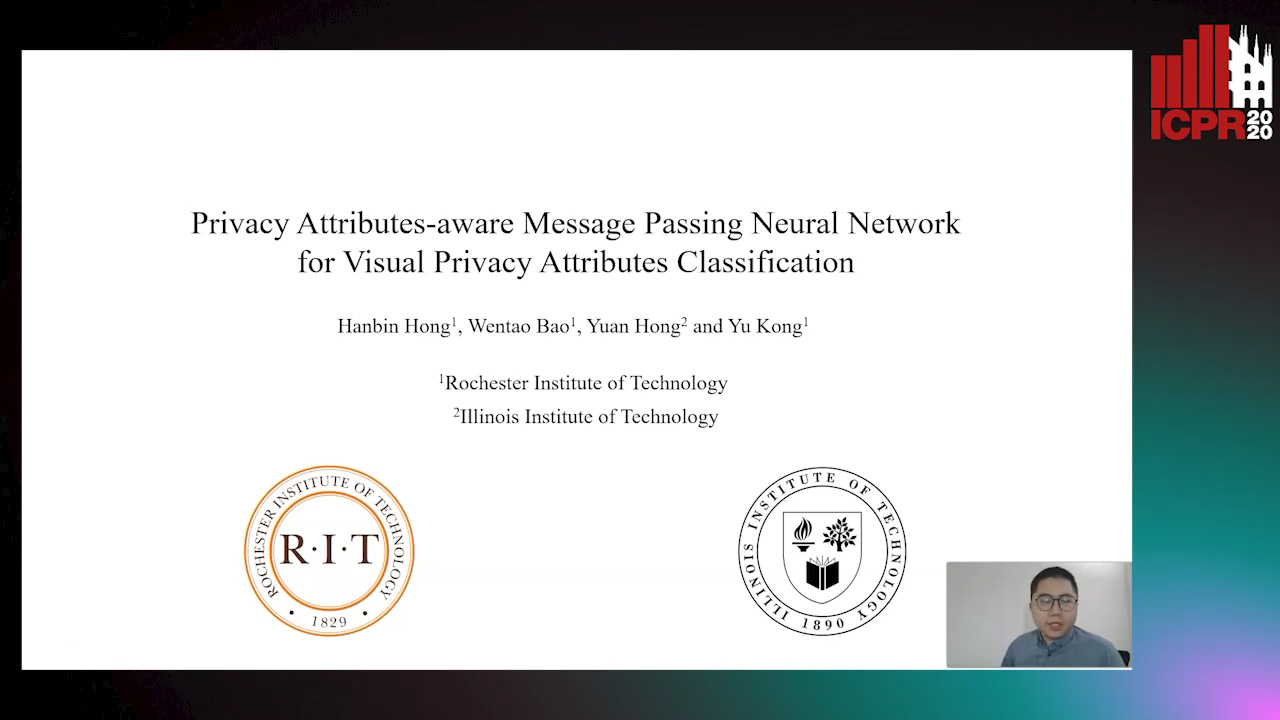
Auto-TLDR; Privacy Attributes-Aware Message Passing Neural Network for Visual Privacy Attribute Classification
Abstract Slides Poster Similar
Graph Convolutional Neural Networks for Power Line Outage Identification

Auto-TLDR; Graph Convolutional Networks for Power Line Outage Identification
GCNs-Based Context-Aware Short Text Similarity Model

Auto-TLDR; Context-Aware Graph Convolutional Network for Text Similarity
Abstract Slides Poster Similar
Learning Connectivity with Graph Convolutional Networks

Auto-TLDR; Learning Graph Convolutional Networks Using Topological Properties of Graphs
Abstract Slides Poster Similar
Kernel-based Graph Convolutional Networks

Auto-TLDR; Spatial Graph Convolutional Networks in Recurrent Kernel Hilbert Space
Abstract Slides Poster Similar
Exploring and Exploiting the Hierarchical Structure of a Scene for Scene Graph Generation
Ikuto Kurosawa, Tetsunori Kobayashi, Yoshihiko Hayashi
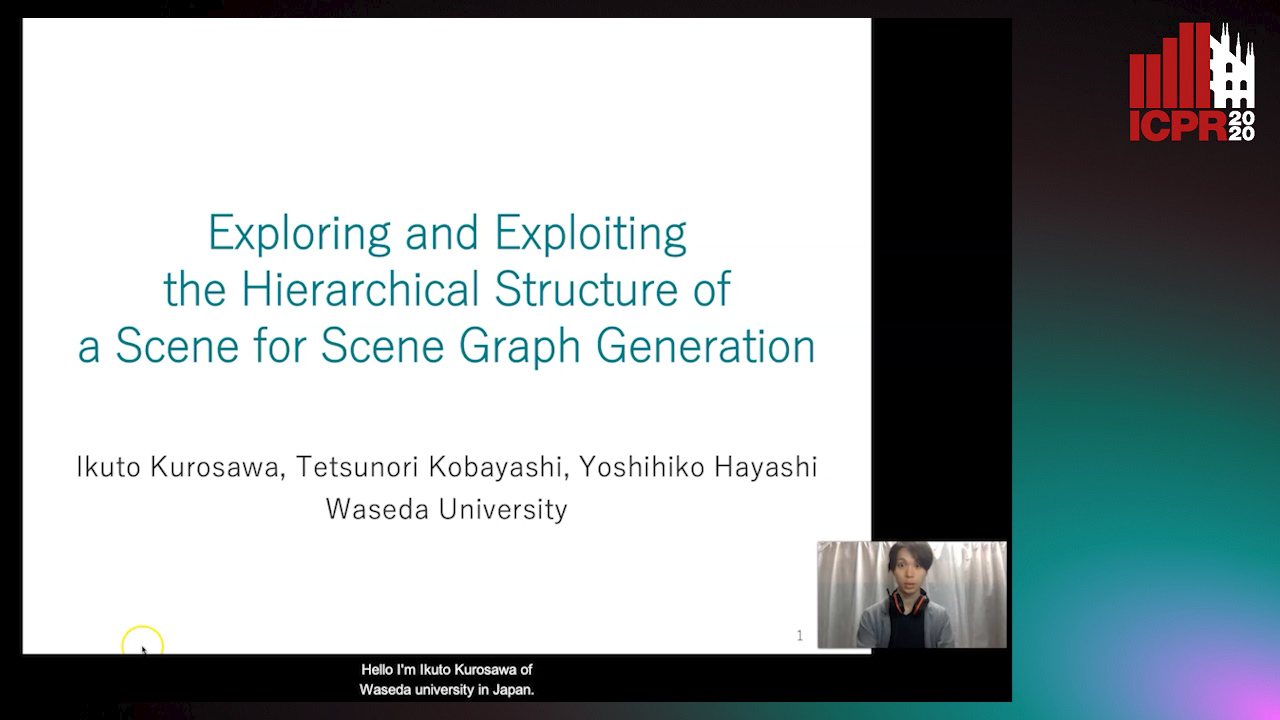
Auto-TLDR; A Hierarchical Model for Scene Graph Generation
Abstract Slides Poster Similar
Graph-Based Interpolation of Feature Vectors for Accurate Few-Shot Classification
Yuqing Hu, Vincent Gripon, Stéphane Pateux

Auto-TLDR; Transductive Learning for Few-Shot Classification using Graph Neural Networks
Abstract Slides Poster Similar
Temporal Attention-Augmented Graph Convolutional Network for Efficient Skeleton-Based Human Action Recognition
Negar Heidari, Alexandros Iosifidis

Auto-TLDR; Temporal Attention Module for Efficient Graph Convolutional Network-based Action Recognition
Abstract Slides Poster Similar
Label Incorporated Graph Neural Networks for Text Classification
Yuan Xin, Linli Xu, Junliang Guo, Jiquan Li, Xin Sheng, Yuanyuan Zhou

Auto-TLDR; Graph Neural Networks for Semi-supervised Text Classification
Abstract Slides Poster Similar
Named Entity Recognition and Relation Extraction with Graph Neural Networks in Semi Structured Documents
Manuel Carbonell, Pau Riba, Mauricio Villegas, Alicia Fornés, Josep Llados

Auto-TLDR; Graph Neural Network for Entity Recognition and Relation Extraction in Semi-Structured Documents
MEG: Multi-Evidence GNN for Multimodal Semantic Forensics
Ekraam Sabir, Ayush Jaiswal, Wael Abdalmageed, Prem Natarajan

Auto-TLDR; Scalable Image Repurposing Detection with Graph Neural Network Based Model
Abstract Slides Poster Similar
Hcore-Init: Neural Network Initialization Based on Graph Degeneracy
Stratis Limnios, George Dasoulas, Dimitrios Thilikos, Michalis Vazirgiannis

Auto-TLDR; K-hypercore: Graph Mining for Deep Neural Networks
Abstract Slides Poster Similar
Zero-Shot Text Classification with Semantically Extended Graph Convolutional Network
Tengfei Liu, Yongli Hu, Junbin Gao, Yanfeng Sun, Baocai Yin

Auto-TLDR; Semantically Extended Graph Convolutional Network for Zero-shot Text Classification
Abstract Slides Poster Similar
Constructing Geographic and Long-term Temporal Graph for Traffic Forecasting
Yiwen Sun, Yulu Wang, Kun Fu, Zheng Wang, Changshui Zhang, Jieping Ye

Auto-TLDR; GLT-GCRNN: Geographic and Long-term Temporal Graph Convolutional Recurrent Neural Network for Traffic Forecasting
Abstract Slides Poster Similar
Modeling Extent-Of-Texture Information for Ground Terrain Recognition
Shuvozit Ghose, Pinaki Nath Chowdhury, Partha Pratim Roy, Umapada Pal
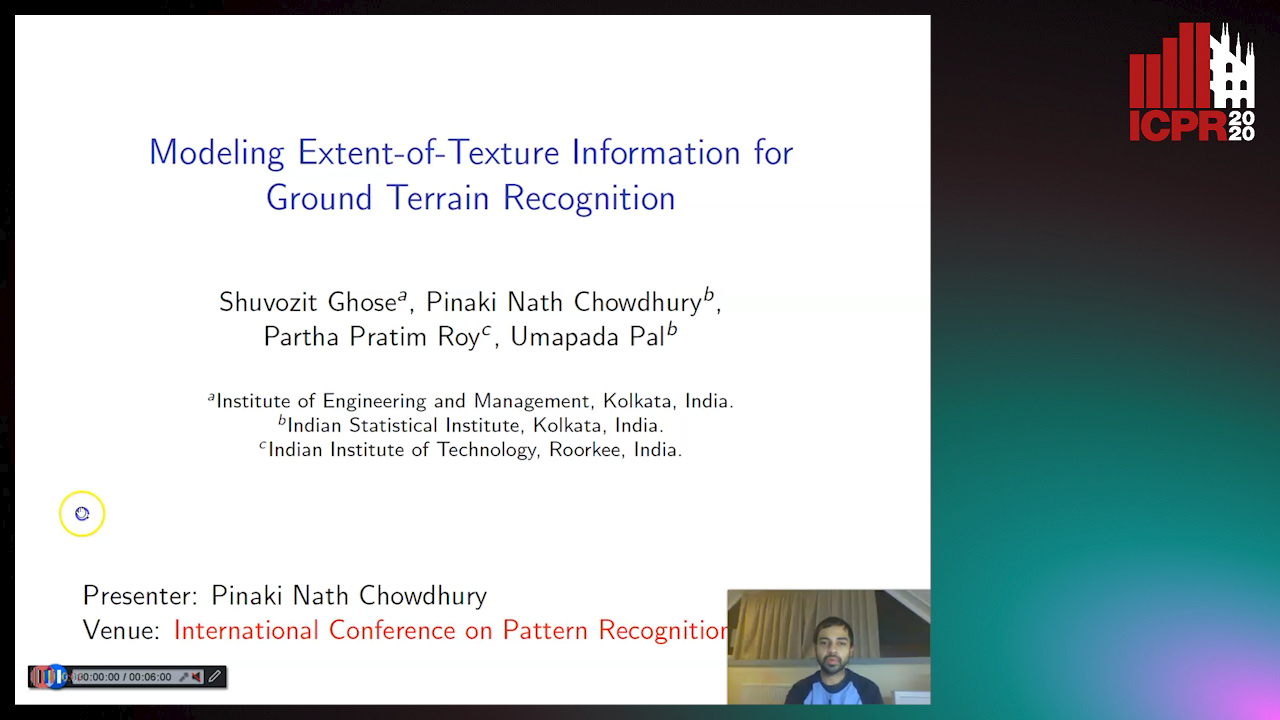
Auto-TLDR; Extent-of-Texture Guided Inter-domain Message Passing for Ground Terrain Recognition
Abstract Slides Poster Similar
PICK: Processing Key Information Extraction from Documents Using Improved Graph Learning-Convolutional Networks
Wenwen Yu, Ning Lu, Xianbiao Qi, Ping Gong, Rong Xiao

Auto-TLDR; PICK: A Graph Learning Framework for Key Information Extraction from Documents
Abstract Slides Poster Similar
Boundary-Aware Graph Convolution for Semantic Segmentation
Hanzhe Hu, Jinshi Cui, Jinshi Hongbin Zha

Auto-TLDR; Boundary-Aware Graph Convolution for Semantic Segmentation
Abstract Slides Poster Similar
Siamese Graph Convolution Network for Face Sketch Recognition
Liang Fan, Xianfang Sun, Paul Rosin

Auto-TLDR; A novel Siamese graph convolution network for face sketch recognition
Abstract Slides Poster Similar
Feature Engineering and Stacked Echo State Networks for Musical Onset Detection
Peter Steiner, Azarakhsh Jalalvand, Simon Stone, Peter Birkholz

Auto-TLDR; Echo State Networks for Onset Detection in Music Analysis
Abstract Slides Poster Similar
A Comparison of Neural Network Approaches for Melanoma Classification
Maria Frasca, Michele Nappi, Michele Risi, Genoveffa Tortora, Alessia Auriemma Citarella

Auto-TLDR; Classification of Melanoma Using Deep Neural Network Methodologies
Abstract Slides Poster Similar
Dealing with Scarce Labelled Data: Semi-Supervised Deep Learning with Mix Match for Covid-19 Detection Using Chest X-Ray Images
Saúl Calderón Ramirez, Raghvendra Giri, Shengxiang Yang, Armaghan Moemeni, Mario Umaña, David Elizondo, Jordina Torrents-Barrena, Miguel A. Molina-Cabello

Auto-TLDR; Semi-supervised Deep Learning for Covid-19 Detection using Chest X-rays
Abstract Slides Poster Similar
CQNN: Convolutional Quadratic Neural Networks

Auto-TLDR; Quadratic Neural Network for Image Classification
Abstract Slides Poster Similar
Classify Breast Histopathology Images with Ductal Instance-Oriented Pipeline
Beibin Li, Ezgi Mercan, Sachin Mehta, Stevan Knezevich, Corey Arnold, Donald Weaver, Joann Elmore, Linda Shapiro

Auto-TLDR; DIOP: Ductal Instance-Oriented Pipeline for Diagnostic Classification
Abstract Slides Poster Similar
Prediction of Obstructive Coronary Artery Disease from Myocardial Perfusion Scintigraphy using Deep Neural Networks
Ida Arvidsson, Niels Christian Overgaard, Miguel Ochoa Figueroa, Jeronimo Rose, Anette Davidsson, Kalle Åström, Anders Heyden
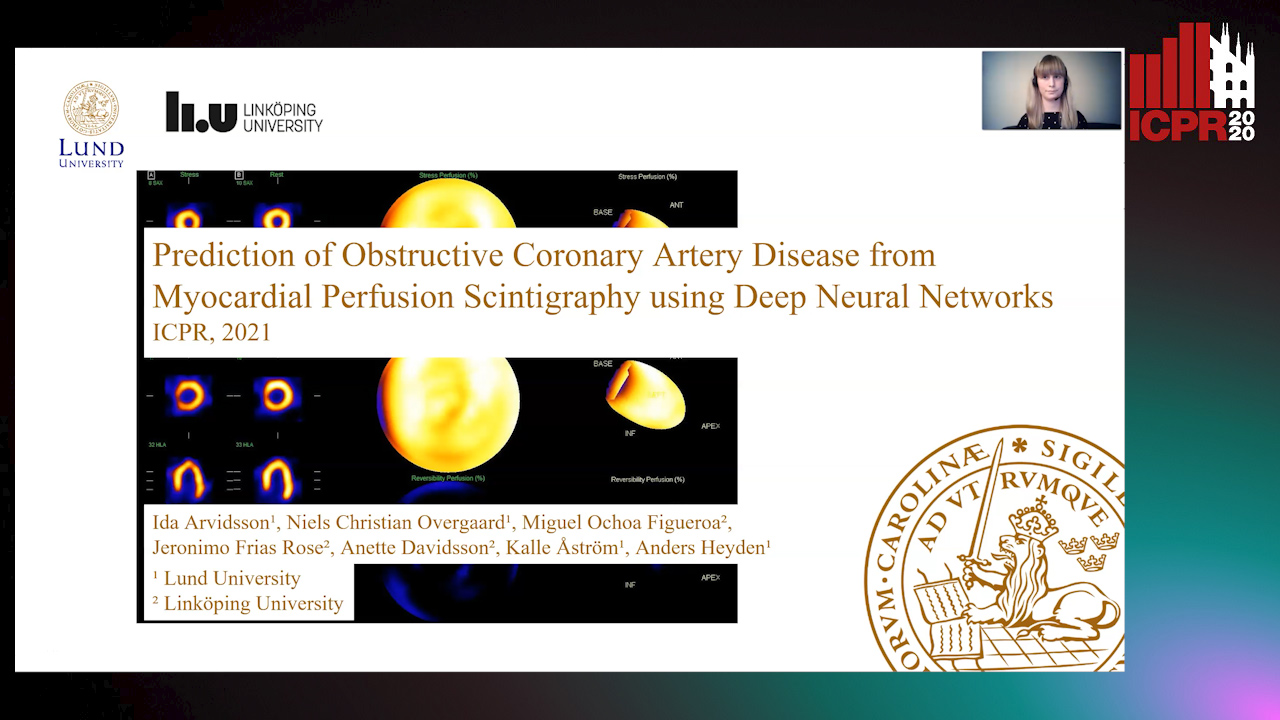
Auto-TLDR; A Deep Learning Algorithm for Multi-label Classification of Myocardial Perfusion Scintigraphy for Stable Ischemic Heart Disease
Abstract Slides Poster Similar
Automatic Classification of Human Granulosa Cells in Assisted Reproductive Technology Using Vibrational Spectroscopy Imaging
Marina Paolanti, Emanuele Frontoni, Giorgia Gioacchini, Giorgini Elisabetta, Notarstefano Valentina, Zacà Carlotta, Carnevali Oliana, Andrea Borini, Marco Mameli

Auto-TLDR; Predicting Oocyte Quality in Assisted Reproductive Technology Using Machine Learning Techniques
Abstract Slides Poster Similar
Multi-Graph Convolutional Network for Relationship-Driven Stock Movement Prediction
Jiexia Ye, Juanjuan Zhao, Kejiang Ye, Cheng-Zhong Xu
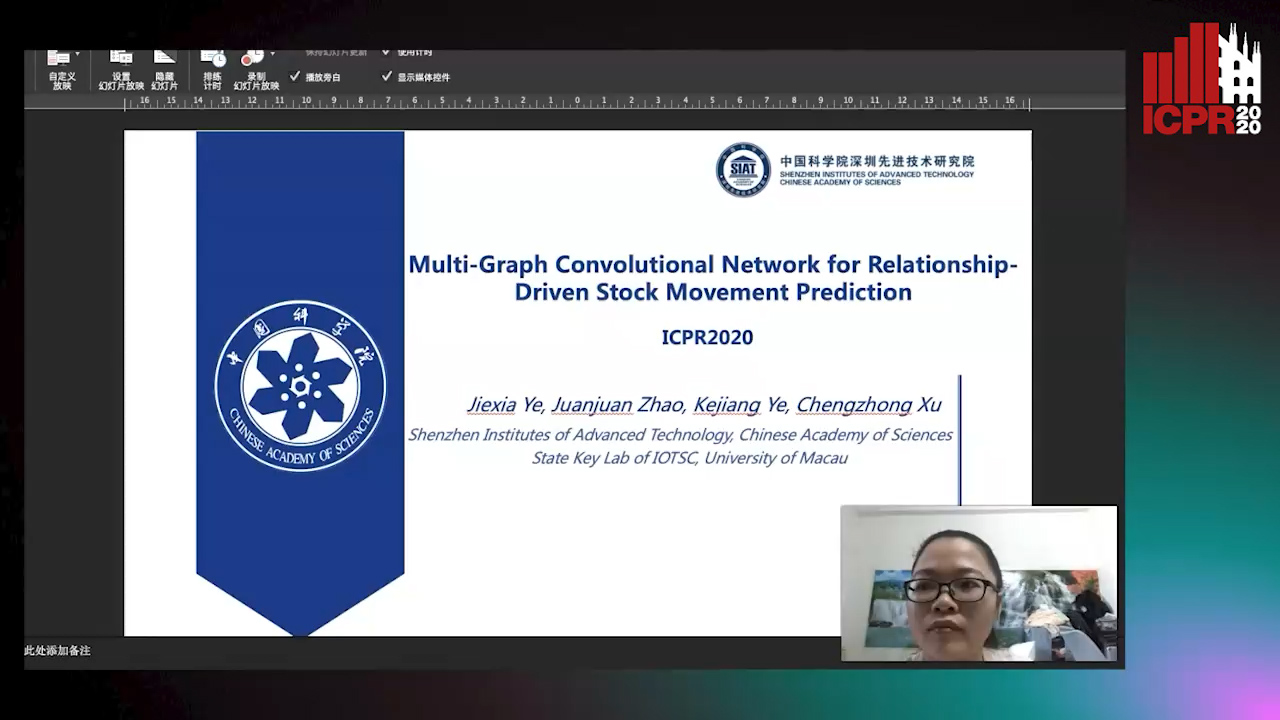
Auto-TLDR; Multi-GCGRU: A Deep Learning Framework for Stock Price Prediction with Cross Effect
Abstract Slides Poster Similar
Directional Graph Networks with Hard Weight Assignments
Miguel Dominguez, Raymond Ptucha

Auto-TLDR; Hard Directional Graph Networks for Point Cloud Analysis
Abstract Slides Poster Similar
Automatic Semantic Segmentation of Structural Elements related to the Spinal Cord in the Lumbar Region by Using Convolutional Neural Networks
Jhon Jairo Sáenz Gamboa, Maria De La Iglesia-Vaya, Jon Ander Gómez

Auto-TLDR; Semantic Segmentation of Lumbar Spine Using Convolutional Neural Networks
Abstract Slides Poster Similar
Context for Object Detection Via Lightweight Global and Mid-Level Representations
Mesut Erhan Unal, Adriana Kovashka

Auto-TLDR; Context-Based Object Detection with Semantic Similarity
Abstract Slides Poster Similar
Learning to Segment Clustered Amoeboid Cells from Brightfield Microscopy Via Multi-Task Learning with Adaptive Weight Selection
Rituparna Sarkar, Suvadip Mukherjee, Elisabeth Labruyere, Jean-Christophe Olivo-Marin

Auto-TLDR; Supervised Cell Segmentation from Microscopy Images using Multi-task Learning in a Multi-Task Learning Paradigm
Transfer Learning with Graph Neural Networks for Short-Term Highway Traffic Forecasting
Tanwi Mallick, Prasanna Balaprakash, Eric Rask, Jane Macfarlane
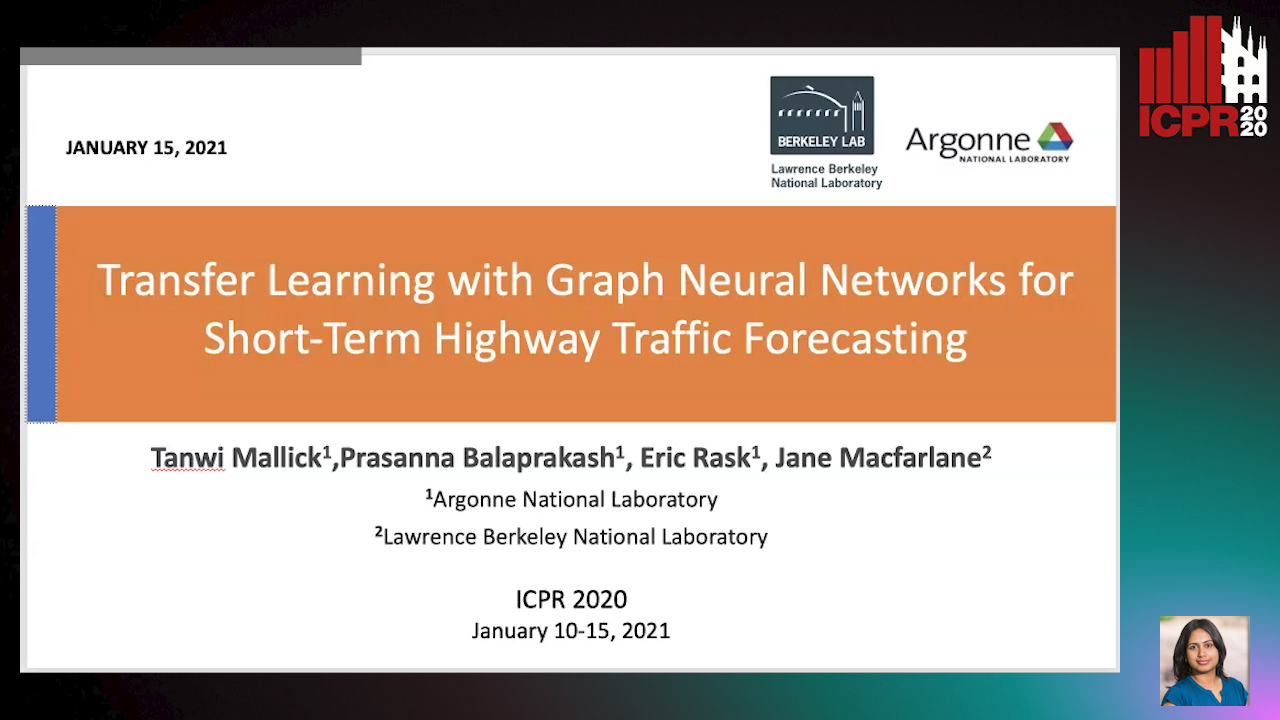
Auto-TLDR; Transfer Learning for Highway Traffic Forecasting on Unseen Traffic Networks
Abstract Slides Poster Similar
G-FAN: Graph-Based Feature Aggregation Network for Video Face Recognition
He Zhao, Yongjie Shi, Xin Tong, Jingsi Wen, Xianghua Ying, Jinshi Hongbin Zha

Auto-TLDR; Graph-based Feature Aggregation Network for Video Face Recognition
Abstract Slides Poster Similar
Merged 1D-2D Deep Convolutional Neural Networks for Nerve Detection in Ultrasound Images
Mohammad Alkhatib, Adel Hafiane, Pierre Vieyres
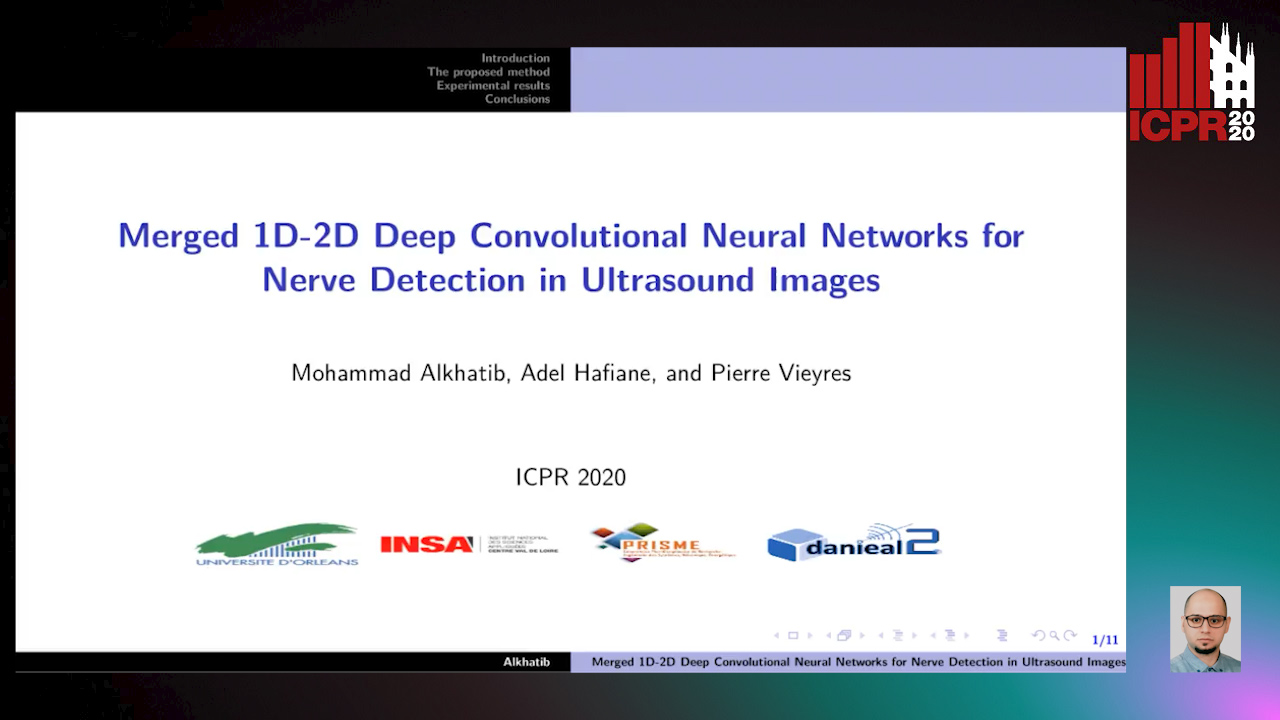
Auto-TLDR; A Deep Neural Network for Deep Neural Networks to Detect Median Nerve in Ultrasound-Guided Regional Anesthesia
Abstract Slides Poster Similar
A Two-Stream Recurrent Network for Skeleton-Based Human Interaction Recognition
Qianhui Men, Edmond S. L. Ho, Shum Hubert P. H., Howard Leung

Auto-TLDR; Two-Stream Recurrent Neural Network for Human-Human Interaction Recognition
Abstract Slides Poster Similar
More Correlations Better Performance: Fully Associative Networks for Multi-Label Image Classification

Auto-TLDR; Fully Associative Network for Fully Exploiting Correlation Information in Multi-Label Classification
Abstract Slides Poster Similar
A Systematic Investigation on Deep Architectures for Automatic Skin Lesions Classification
Pierluigi Carcagni, Marco Leo, Andrea Cuna, Giuseppe Celeste, Cosimo Distante

Auto-TLDR; RegNet: Deep Investigation of Convolutional Neural Networks for Automatic Classification of Skin Lesions
Abstract Slides Poster Similar
Human-Centric Parsing Network for Human-Object Interaction Detection
Guanyu Chen, Chong Chen, Zhicheng Zhao, Fei Su
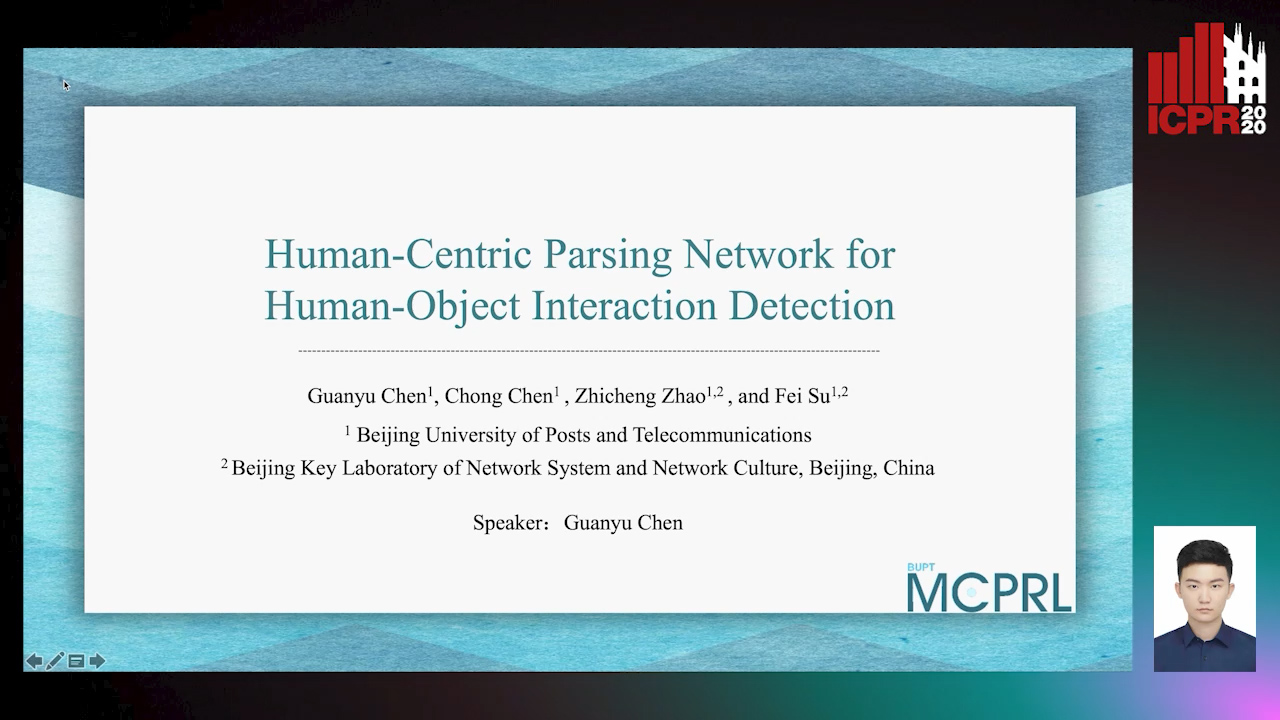
Auto-TLDR; Human-Centric Parsing Network for Human-Object Interactions Detection
Abstract Slides Poster Similar